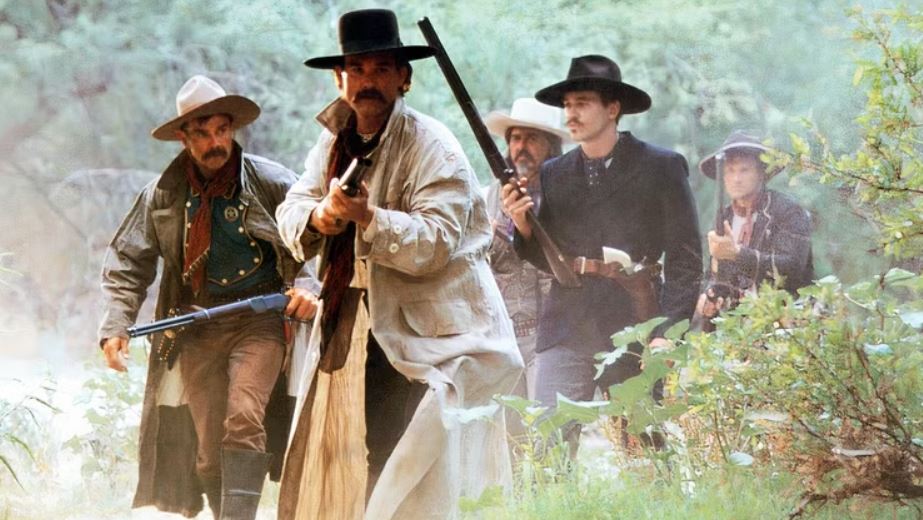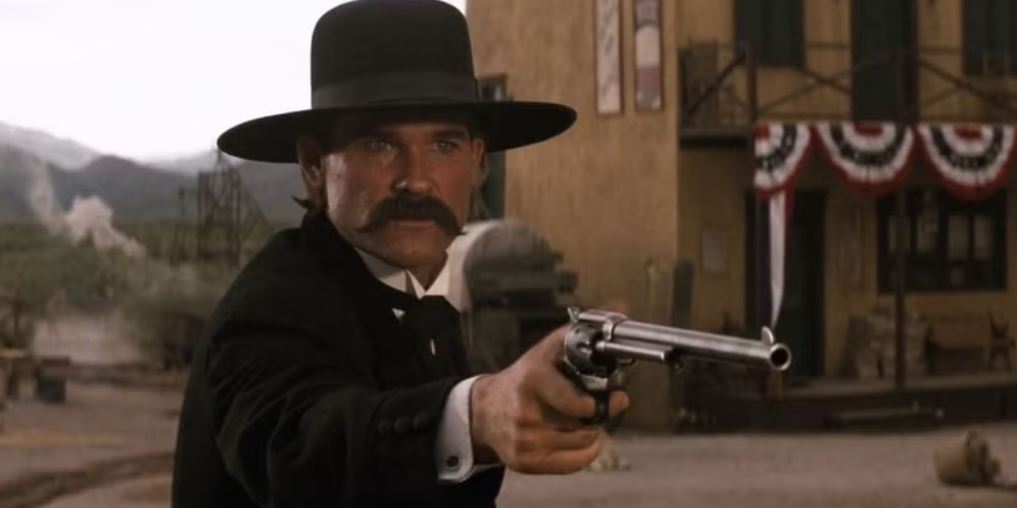That the iconic 1993 Western Tombstone still holds up over three decades later is something that truly speaks for itself. Many may not be aware, however, that despite how well put together it may seem, it suffered from quite a few behind-the-scenes problems during its initial stages of production. As it turns out, the film had a significant conflict with its original director, one that resulted in him dropping out of it entirely. Against all odds, the rest of the crew wasn’t ready to give up so easily, with one particular cast member making the bold choice to step up and handle the directing duties himself.
Kurt Russell continues to receive well-deserved praise for his performance as Wyatt Earp, but he played a much more important role behind the camera that he doesn’t get nearly enough credit for. While the film doesn’t credit him as its director, he might as well have been, taking on a majority of the work that came with the position. Even though director George Cosmatos was the one listed in the credits and was the one who received all the glory that came with it, it’s about time that Russell received the props he’s long deserved for taking up such a daunting task in such a surprisingly troubled production.
Who Was Originally Set To Direct Tombstone?
With the Film’s Writer Also Originally Being Set to Direct, It Could’ve Had Quite a Different Vision
With all the numerous great scenes in Tombstone, Russell has gone on record saying that the screenplay was one of the best that he has ever read, and it’s thanks to its screenwriter, Kevin Jarre, that it ever went into production to begin with. Jarre, who had previously written Rambo: First Blood Part II, had been set to direct the film, which would’ve marked his debut, but things quickly began to fall apart on his watch. As talented a writer as he was, the responsibilities that came with the position as director proved too much pressure for him to handle. Being a full month into production, he eventually fell behind on the shooting schedule, which ultimately led to the studio having to fire him. As it turns out, however, despite his firing, some of the footage that Jarre originally shot still remains in the final edit of the film, with all the scenes that feature Charlton Heston as Henry Hooker remaining exactly as they were, completely untouched.

On the one hand, it’s understandable as to why Jarre was booted from the film; being a director requires a knowledge and skill to speak a visual language that not all writers have, and if they’re not able to keep up with the technical side of everything, it’s probably for the best that they remain as writers. On the other hand, losing such a key figure to any kind of production, especially during the initial filming stages, is never ideal, and doing so can lead to quite a bit of behind-the-scenes trouble that has the potential to upend the project entirely. With a movie like Tombstone, and with the kind of budget that it had, it all came very close to completely falling apart.
How Did Kurt Russell Suddenly Become Tombstone’s Secret Director?
The Actor Took On Most of the Responsibility, But None of the Credit For Doing So
With Jarre’s firing, director George Cosmatos was brought onboard, but this led to quite a bit of tension between certain members of the film’s crew. Even though most of the actors stayed on board, Michael Biehn, who played the role of Johnny Ringo, considered quitting due to the director’s apparent lack of understanding and respect for the script, as well as his demanding on-set attitude, which meant that a certain someone had to play the peacemaker. Cosmatos may have taken over the director’s chair, but, as it turns out, he had no real creative input on the film and was only really there to shoot the shots that were planned and execute any other creative decisions Russell had while overlooking the remainder of its production.
While Cosmatos’ only true influence was within the film’s historical accuracy, it was really Russell who worked with all the actors, collaborated with the cinematographer, and even re-tooled the screenplay by removing certain subplots and putting more focus on the friendship between Wyatt Earp and Doc Holliday. Having someone like Russell doing double duty as director would normally be a major selling point for a film like Tombstone, but it turns out that that was something that the actor originally didn’t want anyone to know about.
In a 2006 interview with True West Magazine, Russell opened up about his decision to step to the plate and do most of the heavy lifting during filming, calling Cosmatos more of a “ghost director”. He also maintained humility regarding his directorial efforts, having claimed that he never wanted “to be the guy”; he never wanted to take credit for being the one who practically carried the entirety of the film’s production on his back.

I backed the director; the director got fired, so we brought in a guy to be a ghost director. They wanted me to take over the movie. I said, ‘I’ll do it, but I don’t want to put my name on it. I don’t want to be the guy.’ I said to George [Cosmatos], ‘I’m going to give you a shot list every night, and that’s what’s going to be.’ I’d go to George’s room, give him the shot list for the next day, that was the deal. ‘George I don’t want any arguments. This is what it is. This is what the job is.’
Kurt Russell’s Bold Move Saved Tombstone From Disaster
It May Not Have Been the True Original Vision That Kevin Jarre Had In Mind, But the Fans Wouldn’t Have it Any Other Way
As different as the final edit of Tombstone may have been from the original vision that Jarre may have had in mind, it’s hard to deny that the shakeup in its production was ultimately for the best. The fact that it came out as the masterpiece of the Western genre that it still is speaks volumes to how much knowledge Russell has about what it takes to direct a film, and it’s enough to make anyone wonder why he hasn’t directed another film since. For those who may doubt the actor’s claims of the amount of hard work that he had to endure to keep the film’s production afloat, he’s not the only one who’s spoken out about his experience. Those statements were once heavily backed up by Russell’s co-star, Val Kilmer (via The Hollywood Reporter), claiming that Russell was “solely” responsible for how the film ultimately turned out, and praised the dedication that he had in taking over all the responsibilities that Jarre wasn’t able to handle.
I was there every minute and although Kurt’s version differs slightly from mine, the one thing he’s totally correct about is how hard he worked…I have such admiration for Kurt as he basically sacrificed lots of energy that would have gone into his role, to save the film. Everyone cared, don’t get me wrong, but Kurt put his money where his mouth was, and not a lot of stars extend themselves for the cast and crew. Not like he did.
Normally, any troubled production like the one that Tombstone experienced would result in a messy, disjointed product that would clearly reflect the obvious behind-the-scenes struggles. However, Russell managed to pull off one of the greatest Hail Mary passes in Hollywood history, resulting in one of the greatest works to ever come from the western genre. As much as he may not have wanted to take credit for all the hard work that he put into seeing the film to its completion, Tombstone is the one film in his filmography in which his performance as director arguably deserves more praise than his performance as an actor.
